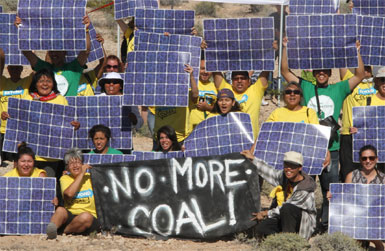With a push of a bright red button, turbines that run Scotland’s largest coal-fired power plant stopped running, marking the end of coal use in the country.
Longannet Power Station, in operation for 46 years, has provided 25% of Scotland’s electricity, but that’s already been replaced by wind.
"Coal has long been the dominant force in Scotland’s electricity generation fleet, but the closure of Longannet signals the end of an era," Hugh Finlay of Scottish Power, told the Guardian. The only big fossil plant left runs on natural gas, and there are two aging nuclear reactors.
Scotland now gets half its electricity from onshore and offshore wind. The 539-megawatt Whitelee Windfarm, for example, produces electricity for 300,000 homes. The goal is 100% renewable electricity by 2020.
Immediately after Scotland’s announcement, Belgium shut its last coal power plant, Langerlo. Cyprus, Luxembourg, Malta and the Baltic countries are also off coal.
All coal plants in Portugal will close by 2020, and in Britain and Austria, by 2025. Poland is the outlier in Europe, committing even more to coal.
In the US, a third of coal plants have closed, and the goal is to replace half with renewables by 2020.

But the story is different in Asia.
$1 Trillion Coal Bust
An incredible 1500 new coal plants are planned – mostly in Asia … at a cost of $981 billion. With the world quickly embracing clean energy, will these assets end up being stranded?
According to the UK’s Energy and Climate Intelligence Unit, "far less than half" of these will be built. For each one that comes online, two are shelved or canceled.
China has so much over-capacity that it is closing 9% of coal plants in the next few years, as it moves to reduce air and water pollution. India also has a supply glut and 11 gigawatts sit idle. Others are closing because there isn’t enough water to run them.
Still 85 new coal plants opened in India, Indonesia and Vietnam last year, 25% more than in 2014. Since 2010, 473 GW have been added worldwide, according to the report, Boom and Bust 2016. Even Japan has 45 coal plants planned.
"Think about what that money could do for other, cleaner types of energy: it could fund the International Energy Agency’s scenario to provide power to the 1.2 billion people lacking access, as well as increase global solar and wind by 39%," says Greenpeace.
"Even if no more coal plants are built, emissions from existing ones would still be 150% greater than what scientists say would limit global warming to 2°C," they add.
Read Boom and Bust 2016: Tracking The Global Coal Plant Pipeline:

Pingback: Another Big Coal Company Declares Bankruptcy, But Keeps On Mining - Sustainable Business
Pingback: India's Renewable Energy Strategy is Working - Sustainable Business